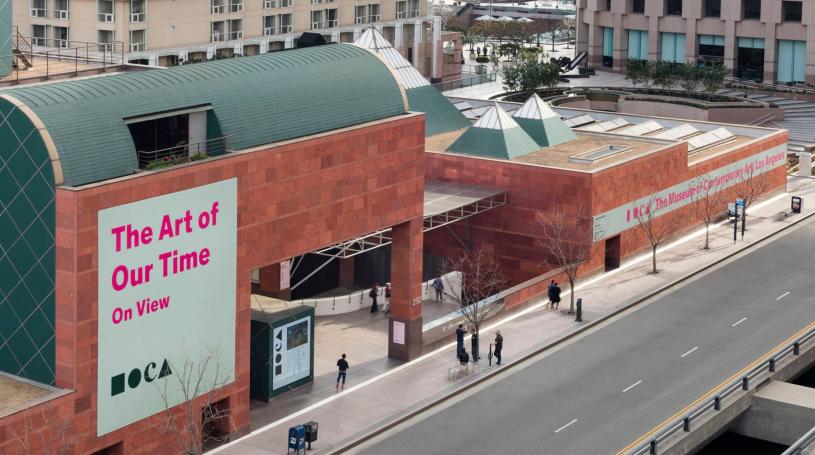US museums revise Covid-19 safety measures amid Omicron surge, some requiring high-quality masks
Getting into the Museum of Contemporary Art (MOCA) in Los Angeles involves making an online timed-entry reservation, paying general admissions ($18 for adults, less for seniors and students, free for members and children under 12) and, more recently, wearing a surgical, KN95, N95 or KF94 face mask. That last requirement, instituted in mid-January, is a first for an art museum in California or elsewhere in the US, although others may be following suit in the coming weeks and months.
Amy Shapiro, deputy director of the museum, says that the institution’s “guiding principle throughout the pandemic has been to put the safety of our staff and visitors first. With the rising cases of the Omicron variant, alongside efficacy studies on which masks work best, we made the decision to update our mask policy for staff and visitors”.
LA MoCA’s policy, she says, stemmed from overall regulations set by the city of Los Angeles, which requires proof of full vaccination to enter the museum, with exemptions only permitted for those unable to take the vaccine due to a medical condition or a sincerely held religious belief. “Those exempt,” she adds, “will need to provide proof of a negative Covid-19 test taken within 72 hours prior to visiting.”
The rules about what visitors to museums are required to do or provide in order to enter these institutions is a mixed bag, based on laws in the local community, state or just within the museums themselves.
“Frankly, it’s a patchwork, and places are changing rules and practices as infection rates change their communities,” says Laura Roberts, a museum consultant in Cambridge, Massachusetts. She notes that some institutions require proof of vaccination and timed entry tickets in order to limit the number of people in the building at one time, while others do not.
Bans on mask mandates in all public schools and government buildings in Florida and Texas do not apply to private museums, but some of these institutions tend to make mask-wearing optional perhaps to avoid incurring the wrath of state officials and members of the public. The Dallas Museum of Art’s website informs prospective visitors that as of 21 October 2021, “face coverings are no longer required indoors for fully vaccinated visitors and staff; however, face coverings are recommended to maximise protection from the Delta and Omicron variants per CDC guidance”. On the other hand, the Museum of Fine Arts in Houston requires face masks be worn indoors at all its locations.
In Florida, the Tampa Museum of Art “no longer requires the use of face masks to visit indoor galleries and leaves the decision of mask usage up to each individual for their own safety and the safety of others”, while the policy at the Ringling Museum in Sarasota holds that “face masks are expected, but not required to be worn”. The Pérez Art Museum Miami has a stricter policy, with facial coverings “required for all visitors—ages two and older—and museum staff in accordance with CDC and Miami-Dade County guidelines”. The Pérez also promotes one-way movement through museum galleries, and hand sanitising stations are located throughout the galleries, lobby and outdoor areas, in order to limit congestion and the potential spread of infection.
The patchwork of rules is also found in Washington, DC, where all visitors aged two and up to the National Gallery of Art are required to wear masks indoors, but as of 15 January those 12 and older planning to eat at the museum (or at any café or restaurant in the district) will need to prove that they have received at least one dose of a Covid-19 vaccine; beginning 15 February, proof of a second does will be required.
The Cleveland Museum of Art is no longer requiring all visitors to submit to a temperature screening, while the more cautious Harvard Art Museums mandate visitors wear masks and provide a proof of vaccination or a negative Covid-19 PCR test. Those face masks also must “cover both the nose and mouth of the wearer and must provide a tight fit against the face. Unacceptable face coverings include single-layer cloth face coverings, bandanas hanging loosely and not secured under the chin, masks with exhalation valves/vents, and coverings made from loosely woven material or highly elastic fabric”.
The J. Paul Getty Museum is “considering the mask issue”, according to a spokesperson, although the museum’s current rules are clearer about what is not accepted—“gaiters, bandanas, scarves, ski masks, balaclavas or masks with an exhalation valve”—than what is.

